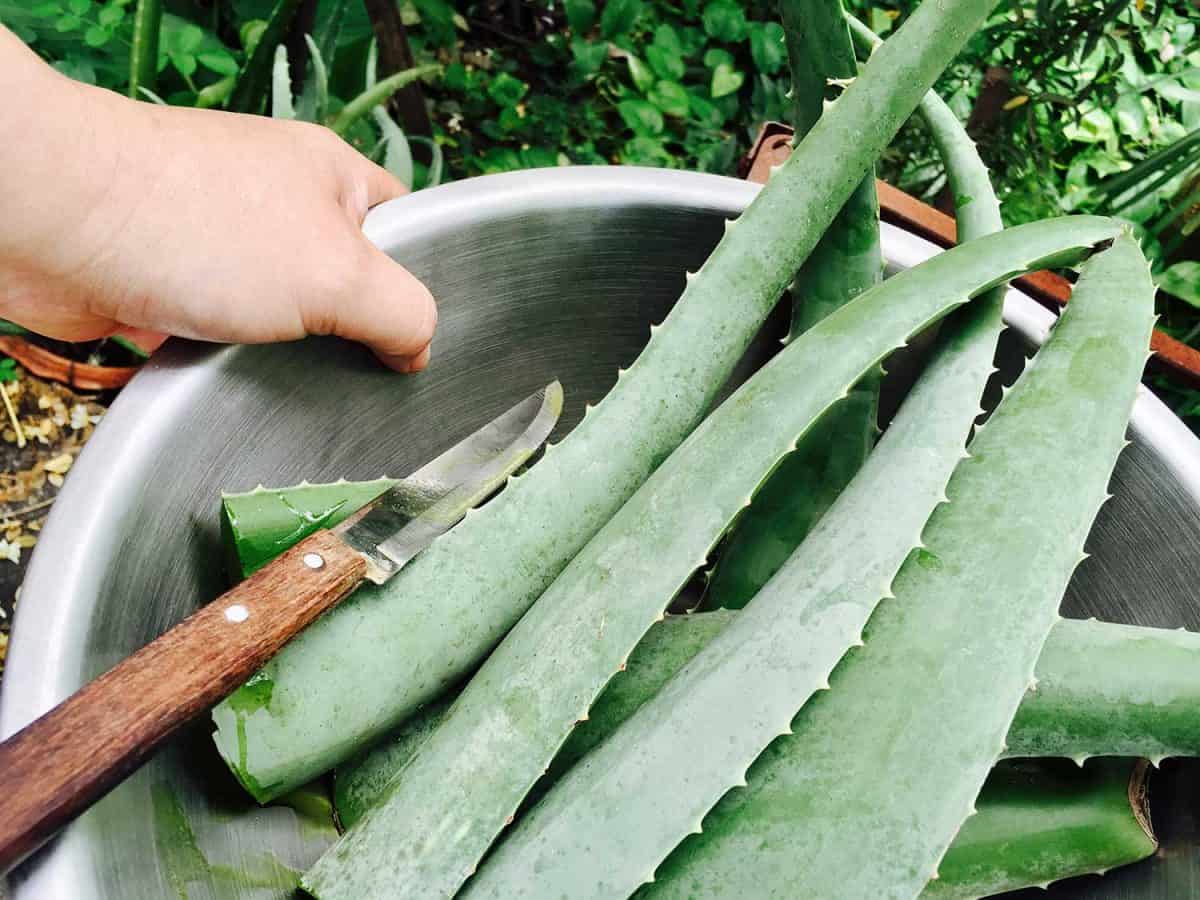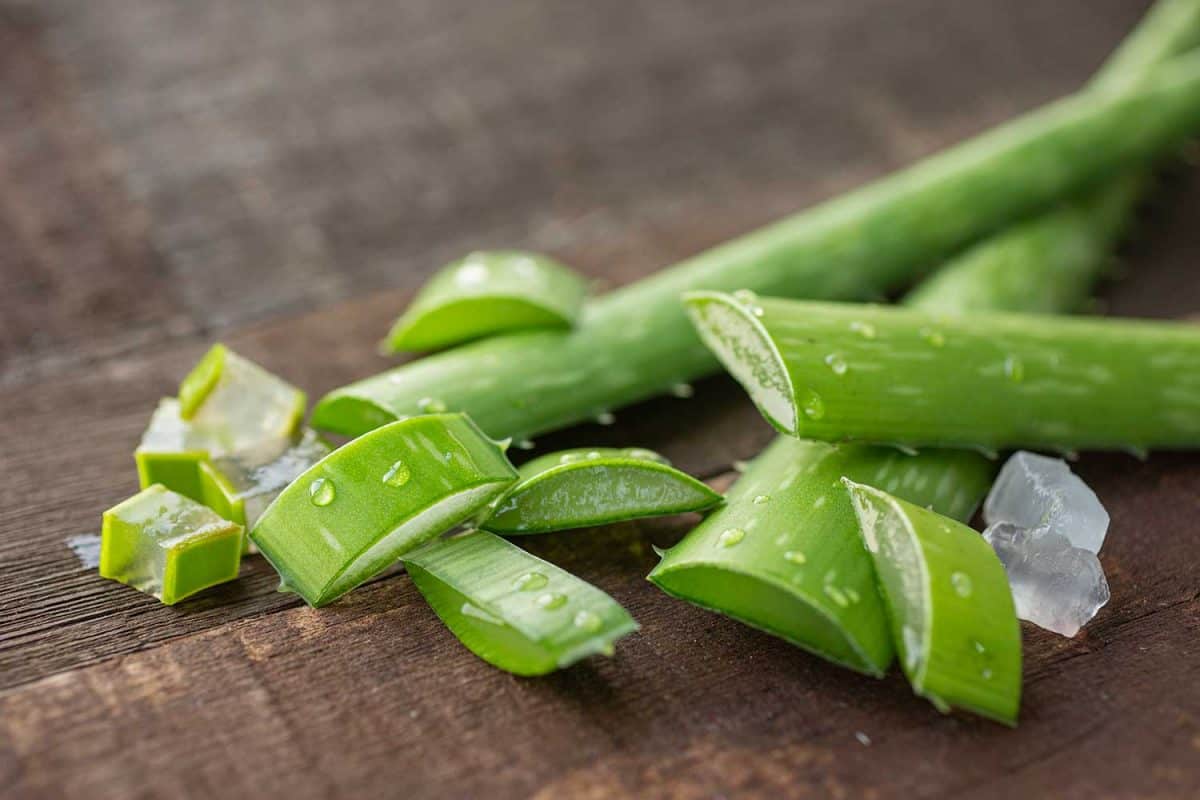Aloe vera gel has several benefits, ranging from preserving food to moisturizing dry skin. But optimizing the gel’s effects may require you to freeze it. But can you freeze aloe vera gel? How can you freeze it? We sought the advice of plant experts so you don’t have to do this task.
You absolutely can freeze fresh aloe vera gel. Keep in mind that the quality of the stored aloe vera can affect the benefits provided. Additionally, following the correct freezing and storing process can help provide the best results.
Freezing fresh aloe vera gel is easy. Although the process doesn’t take more than a few minutes of your time, it’s still possible to make errors. Continue reading, and you’ll learn the essential things you need to know about freezing and storing aloe vera gel correctly.
NOTE: WE MAY GET A COMMISSION IF YOU DECIDE TO MAKE A PURCHASE THROUGH THESE LINKS. THERE'S ADDITIONAL NO COST TO YOU. CHECK THE BOTTOM OF THE PAGE FOR MORE INFORMATION.

Freezing Fresh Aloe Vera Gel
You can put freshly cut aloe vera gel into containers for future use. You can also enhance the overall quality of the preserved product by using specific techniques, ranging from collecting the gel from high-quality aloe vera plants to the freezing and storing techniques used.
How to Check for High-Quality Aloe Vera
Not every aloe plant in your garden will provide the same benefits. Healthy mature plants will have tall flower spikes, called inflorescences, which tend to be red or yellow. It is quite difficult to produce these flowers, particularly in aloe vera houseplants, as they need as much light and water as possible.
However, it doesn’t mean that the plant can’t provide optimal benefits from its gel if the inflorescences didn’t bloom. The quality of the gel produced can be slightly lower if your aloe plant doesn’t have these flowers. Nonetheless, the gel should still provide great benefits if the plant doesn’t have signs of pests and diseases.
You’ll know if the aloe plant is quite healthy if it’s mostly green. If you see signs of rotting or little holes caused by pests, such as mealybugs and scales, the gel might already be compromised.
How to Harvest Aloe Vera

Cutting an aloe plant haphazardly can ruin the quality of its gel. Ensuring the highest concentration of the plant’s gel requires the practice of careful harvesting procedures.
Start by choosing the thickest leaves. Remove four leaves at most to avoid irreparable damage to the plant. Next, start cutting the leaves; make sure that the cut is as close to the stem as possible. This is because most of the plant’s essential nutrients are near the base of the leaves.
Clean the leaves by washing them. Also, use a knife to remove the prickly edges. Cut the gel into cubes or slices and store it properly. But how do you store it properly? Keep reading.
How to Freeze Aloe Vera Gel
The freezing method used in storing aloe vera gel is just as important as picking a high-quality plant. Failure to properly freeze and store the gel can reduce the quality of this product. This would lead to a reduction of potency for the possible benefits the gel might bring. Here are some tips to ensure the aloe gel is frozen and stored properly to optimize its shelf life.
Use Airtight Containers
Aloe gel starts to decompose the moment you cut the leaf. Bacteria and natural enzymatic reactions begin reducing the gel’s healthy properties upon cutting a portion of the plant. However, you can delay the rot by putting the gel in an airtight container.
Oxygen can increase the speed at which objects, including aloe vera gel, decay. Use a bottle or jar with a screw-on lid. Avoid containers with easy-open designs as air can still seep through the tiny crevices.
Another option is to use brushed stainless steel containers. Not only do these look elegant, but they also tend to have locking mechanisms to create airtight seals. In turn, these metal containers can help preserve the freshness of aloe gels for as long as possible. Stainless steel is also a good insulator, promoting a longer shelf life for the aloe gel while it’s inside the refrigerator.
Make Aloe Vera Gel Ice Cubes
If you don’t have an airtight container handy, you can use the ice trays in your freezer to store the aloe gel.
Use a cup or spoon to fill the tray with the gel. Place it in the freezer and don't touch or use it overnight. Once the gel is frozen, transfer it to a sealable plastic bag. Label the bag with the current date to let you know when you stored it.
When to Harvest Fresh Aloe Vera Gel?

The best time to harvest fresh aloe vera gel is when the fronds’ tips have a rose-like color. The leaf should also look ripe with healthy green shades. Avoid the leaves without the rose-colored tips to allow the plant to heal and continue growing after cutting.
Is Frozen Aloe Vera Good for Skin?
Using frozen aloe gel promotes numerous skin benefits. For instance, rubbing frozen aloe vera cubes helps tighten skin, reducing wrinkles and fine lines. The gel’s moisturizing properties can also help hydrate the skin, giving you a beautiful glow.
How Long Can You Freeze Aloe Vera Gel?
It's possible to lengthen the shelf life of aloe vera gel for up to six months by freezing it. For the best results, make sure not to leave the gel exposed to light and oxygen for extended periods of time. Return the container to the freezer immediately after each use.
How do You Thaw Aloe Vera Gel?
Don’t heat or defrost frozen aloe vera gel in a microwave or oven to thaw it. Instead, leave it out at room temperature for about two hours. Avoid direct sunlight, as overexposure to UV rays may reduce the gel’s efficacy.
In Closing
Freezing aloe vera gel is a great way to extend the product’s shelf life. Remember, the plant’s health can affect the quality of the gel. Also, make sure to use the correct techniques to freeze and store the gel to avoid early signs of decay. If done correctly, you should always have a fresh batch of ready-to-use aloe gel!



